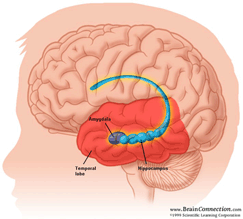|

CLICK ON weeks 0 - 40 and follow along every 2 weeks of fetal development
|
||||||||||||||||||||||||||||
|
|||||||||||||||||||||||||||||
|
Home | Pregnancy Timeline | News Alerts |News Archive Jun 8, 2015
|
Motherhood permanently alters your brain Dr. Lissa Galea of the University of Buffalo, has scientific interest in how hormones affect brain and behavior. She has oberved in her career that one hormone not receiving much attention were estrogens used in hormonal therapy. Yet they have been shown to have variable effects on brain function through three forms: estradiol (or oestradiol), estrone (also known as oestrone) and estriol (also called oestriol). Hormone therapy (HT) is prescribed to alleviate some of the symptoms of menopause in women who are more likely to be diagnosed with Alzheimer's disease — though not other forms of dementia. HT has been prescribed to treat cognitive decline in post-menopausal women with varying degrees of effectiveness. Dr. Galea presented her latest findings on hormone therapy and brain function at the 9th Annual Canadian Neuroscience Meeting.
Research in women, confirmed by Dr. Galea's research in rats, shows that the form of estrogen called estradiol (predominant in young women) has many beneficial effects. However, the beneficial effects of estrone depended on whether or not the rats had previously been mothers. Yet, estrone-based HT was found to impair learning in middle-aged rats that had been mothers — but improve learning in rats that were never moms.
Dr. Galea's interests lay in how hormones affect brain and behavior. She has oberved that one hormone not receiving much attention are estrogens used in HT hormone therapy. (HT) has been shown to have variable effects on brain function. There are three forms of estrogens: estradiol, estrone and estriol. Estradiol is the most potent of estrogens, and it is the predominant form in young women, while estrone is a weaker estrogen and is the predominant form in post-menopausal women.
 brain region called the hippo- campus, important in memory and spatial abilities such as navigation. Both estradiol and estrone increase the production of new cells in a part of the hippocampus called the dentate gyrus. However, only estradiol significantly increased the survival of new neurons increasing the expression of zif268, a protein involved in neuroplasticity. Estradiol improved performance of young female rats in a test called the water maze. The water maze tests memory and orientation as rats must swim to a submerged platform relying on visual cues to orient themselves. Rats receiving estradiol based HT found the platform significantly better than those rats receiving estrone-based HT. Finally, Dr. Galea's previous research had shown that motherhood causes changes in the architecture of connections in the hippocampus, so her team investigated whether the different forms of estrogens could have different effects on rats that had experienced motherhood once (primiparous rats) and on those who had not (nulliparous rats).
As estrone is a component of the most common form of HT prescribed for women in the US, her findings might also have implications on the treatment of age-related neuro-degenerative disorders in women. "Hormones have a profound impact on our mind. Pregnancy and motherhood are life-changing events resulting in marked alterations in the psychology and physiology of a woman. Our results argue that these factors should be taken into account when treating brain disorders in women," concludes Dr. Galea. From Dr Galea's University of British Columbia website: About the Canadian Neuroscience Meeting The Canadian Association for Neuroscience is the largest association dedicated to the promotion of all fields of neuroscience research in Canada. The association has been organizing a yearly annual meeting since 2007. Learn more about our meeting at: http://can-acn.org/meeting2015
|
||||||||||||||||||||||||||||